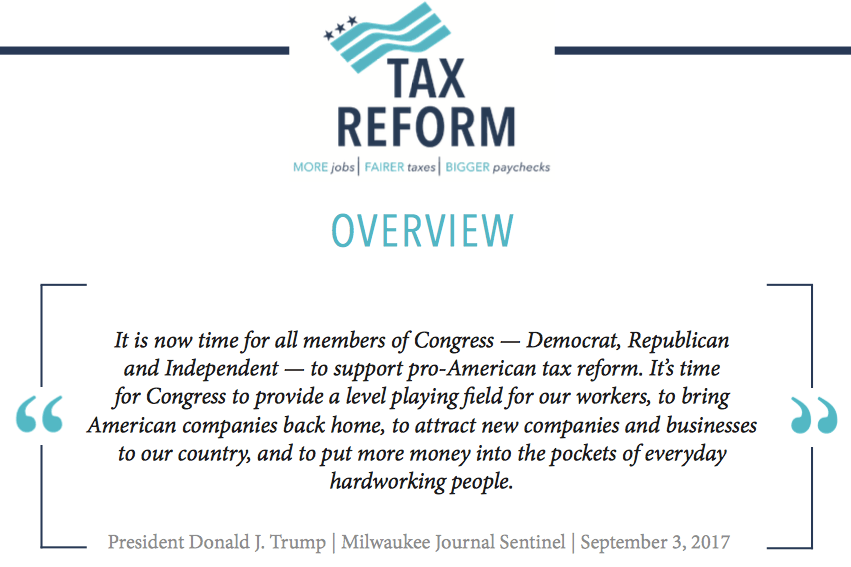The leaders of the Republican House, Paul Ryan, and of the Senate, Mitch McConnell unveil their tax cut plan. Credit: Ron Sachs/CNP/PA Images
After failing to repeal ObamaCare, the Republicans who are supposedly in charge of Washington DC are moving on to their next big objective: tax cuts. The plan, as drafted, doesn’t look much different from what you might have expected from pre-Trump Republicans:
- Working class voters who provided Trump’s margin of victory would, on balance, get nothing.
- Upper-middle income taxpayers, who are tending to move away from the GOP and centre right parties across much of the world, would see their taxes hiked.
- Traditional Republican constituencies – the well-off and business owners – will get the overwhelming bulk of gains. I suspect the political implications of this fact will cause Republican Congressmen and Senators to try to scale the plan’s scope back, which in turn endangers presidential support as Trump has made clear he primarily cares about a deep cut in the corporate tax rate1.

Let’s briefly examine some of the specifics…
The Republican tax cut plan remains in flux, but the basic outline released two weeks ago provides a sense of the GOP’s priorities. They are clearly seeking to do two things:
- dramatically reduce the cost of capital, especially for large corporations, and
- provide modest tax relief for middle-income taxpayers.
This will not be much of a tax “reform” (despite the headline given to the plan by its authors) but, unless changed, a large tax cut.
Cutting the rate of income tax for large corporations to 20% is the largest item in the plan. Many American small businesses are taxed as “pass through” income to taxpayers’ personal income tax returns. In order to provide rough equity in treatment the plan proposes to cut their top rate of taxation from 39.6% to 25%. These provisions ensure that the bulk of tax relief will flow to both large and small businesses.
Owners of capital or well-to-do taxpayers are benefited by two other proposals. The inheritance tax will be eliminated. This will only help taxpayers with estates in excess of $5.4 million (as estates below that level are already exempt from the so-called death tax). The top rate of income tax, paid by couples earning over $500,000 a year, will also be cut from 39.6% to 35%, although the plan states this could be less generous or even set aside as negotiations continue.
Taxpayers earning below these lofty amounts will see a variety of changes that will benefit some, hurt others, and leave many unaffected:
- Upper-middle income taxpayers, approximately those earning between $130,000 and $350,000, will see a substantial tax increase due to complicated changes in what types of expenses they can deduct from their taxable incomes2.
- Families making less than $45,000 will see no change on average, while single people earning more than $25,000 will likely see a small increase in their taxes (the plan increases the bottom rate of taxation from 10% to 12%).
- Those in between those two bands will probably see a modest tax cut ranging from a few hundred to as much as two thousand dollars, depending on their earnings and their family size.
One can only guess what the final bill will actually look like. Moreover, we cannot be sure that this Congress can pass a tax cut plan – despite the sense that failure to do so will probably destroy their chances in next November’s 2018 midterm elections.

 Main Edition
Main Edition US
US FR
FR






Join the discussion
Join like minded readers that support our journalism by becoming a paid subscriber
To join the discussion in the comments, become a paid subscriber.
Join like minded readers that support our journalism, read unlimited articles and enjoy other subscriber-only benefits.
Subscribe